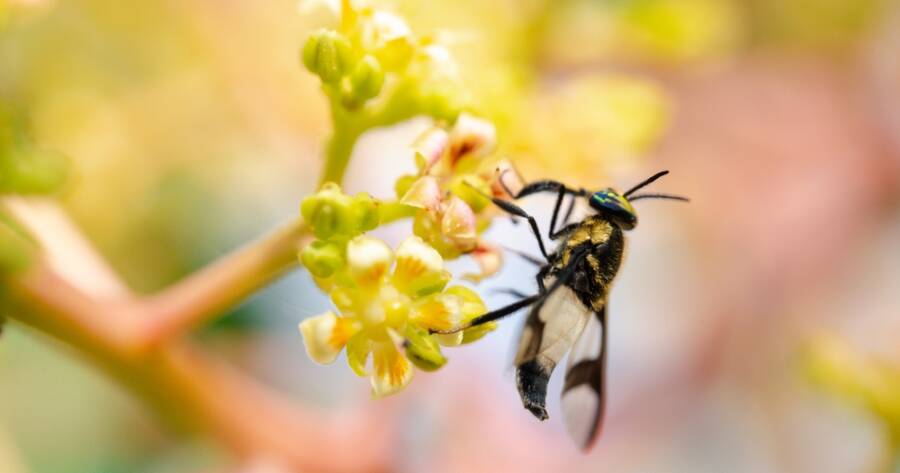Pollinators like bees, butterflies, and hoverflies play a crucial role in supporting biodiversity and food production. Yet their numbers are declining due to habitat loss, pesticide use, and climate change. One way individuals can help is by creating pollinator-friendly gardens — even small ones — using native plants. Pollinating gardens offer food, shelter, and nesting sites for insects while bringing colour and life into urban and rural spaces alike. And the best part? You don’t need to be a botanist to get started.
Why Native Plants Matter for Pollinators
Not all plants are created equal when it comes to supporting pollinators. Many ornamental flowers found in garden centres may look beautiful but offer little nectar or pollen. Others bloom at the wrong time of year or don’t suit local insect species. That’s where native plants come in.
EU-native plants have evolved alongside regional pollinators, creating natural partnerships. Native bees, butterflies, and beetles recognise these plants as reliable sources of food and habitat. For example, the Common knapweed (Centaurea nigra) is a magnet for bumblebees, while Bird’s-foot trefoil (Lotus corniculatus) is a favourite of many butterflies across Europe.
By choosing plants that are local to your region, you support ecosystems that already exist — rather than introducing unfamiliar species that may disrupt them. Native plants are also more likely to thrive in your climate and soil without extra water or fertiliser.
Planning the Space: Structure, Light, and Shelter
Designing a pollinator-friendly garden starts with understanding your space. Whether you’re working with a large garden, a community plot, or a sunny balcony, the key is to provide a variety of plants and structures that bloom across seasons and offer shelter.
Sunlight is important. Most flowering plants that attract pollinators need full to partial sun, so choose a location that gets at least six hours of daylight per day. If your space is shaded, look for native shade-tolerant plants like Wood forget-me-not (Myosotis sylvatica) or Lungwort (Pulmonaria officinalis).
Consider layering your planting. Use a mix of ground covers, low flowers, medium-height herbs, and taller shrubs. This creates habitat for different types of pollinators and ensures visual interest year-round. Add features like dry-stacked stones, hollow stems, or untreated wood to support nesting and overwintering insects.
Even in urban settings, balconies and rooftop gardens can be adapted with native potted plants, vertical planters, and hanging baskets. Grouping several containers together helps pollinators find them more easily.
Seasonal Blooms and Continuous Food
One of the most important principles of pollinator gardening is seasonal succession. This means choosing plants that flower at different times of year so that pollinators always have something to eat. A gap in blooms — even for a few weeks — can make life harder for local insects.
In spring, early bloomers like Primula veris (cowslip), Pulmonaria, and native crocuses provide critical energy for emerging bees. Summer offers a broader selection, including Salvia pratensis (meadow clary), Echium vulgare (viper’s bugloss), and Origanum vulgare (wild marjoram). Autumn-flowering species like Ivy (Hedera helix) and Devil’s-bit scabious (Succisa pratensis) help pollinators stock up before winter.
Aim to have at least three different plants in bloom at any given time. Group each type in clumps rather than scattering them — this makes it easier for pollinators to forage efficiently.
Avoid hybridised or double-flowered varieties, which may lack nectar or be difficult for insects to access. Native wildflowers, herbs, and fruiting shrubs are usually the safest bet.
Avoiding Chemicals and Encouraging Natural Balance
A truly pollinator-friendly garden is free from synthetic pesticides and herbicides. These chemicals may kill unwanted pests, but they can also harm beneficial insects — including pollinators and the plants they visit.
Instead of chemical sprays, encourage natural pest control through biodiversity. Birds, frogs, and predatory insects like ladybirds and lacewings help keep aphids and caterpillars in check. Choose plant combinations that naturally deter pests, such as mixing strong-scented herbs like thyme or fennel among your flowers.
Mulch with compost or straw to retain moisture and suppress weeds, rather than relying on chemical weed killers. And remember, a few holes in the leaves are a sign that your garden is alive and part of a larger ecosystem — not something to be feared.
If you want to take things a step further, install a small insect hotel or leave a patch of bare, undisturbed soil for solitary bees to nest. These small gestures can make a big difference.
Every Garden Can Make a Difference
Designing a pollinator-friendly garden using EU-native plants is a simple yet powerful way to support biodiversity at home. Whether you have a full garden, a shared courtyard, or a single balcony box, your space can become a haven for bees, butterflies, and other important insects.
By planting native species, creating continuous blooms, avoiding harmful chemicals, and welcoming natural diversity, you contribute to a healthier environment — not just for pollinators, but for everyone. In today’s changing world, even the smallest garden can be part of the bigger solution.

